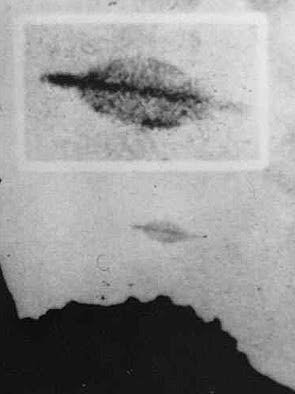TRUE ALIEN - CHAPTER 6

There are roughly 8.7 million species of life on this planet. Each year thousands more are found. Nearly two hundred go extinct every hour.
How is a new species discovered? A scientist says so.
It goes like this: Some dedicated loner sits in the dirt of a miserable jungle, staring at ants or snakes or sloths, biding their time and hoping something new crosses their path. If they spot a creature they think is undocumented, they examine it, compare it, dissect it, show it to other scientists who are sitting in their own patches of dirt, and only when they all agree that the new thing is indeed a new thing do they announce the finding.
It’s hard work, and I don’t mean to insult the good people who spend their time applying the scientific method to this wild, unruly world. These are serious and exacting professionals who should not be casually dismissed.
But I fear that in their rigor they miss too much. Their pride of expertise blinds them.
There are 7 billion people on the Earth and few of them are scientists. But most of these 7 billion people have eyes, and they know a strange, new thing when they see it, even if they can’t name its genus or phylum.
What happens when one of these 7 billion non-scientists glimpses something no one else has ever seen before?
They are ignored. Or ridiculed. Often, if they insist on the truth of their “amateur” discovery, they are actively ruined.
Here is a short list of only a few of the double verified (but as-yet unofficial) species discoveries made by non-scientists since 1957.
Gangly Waterbug: Described by John Tildon in Chapwick, England 1968.
“It weren’t but twenty feet from me, crossed the road up from the pond on all fours like a dog, but bigger. There’s no bears in England, but that’s what it looked like to me, but hairless and skinny. It gave me a nasty look-over, like an ex-girlfriend at the pub, then ran off into the wood on the other side of the path. I swear I could’ve hit it with a stone.”
Devilpig: Seen by Tamara Sweeney, Cherry Hill, New Jersey, 1988.
“I love camping and make a point to go at least twice a year, usually over a long weekend in the spring and summer months. This was late, though, an October trip, so it was getting chilly and there weren’t many people in the area. And I’m a conscientious camper, I like to keep a low profile environmentally, so I guess it must have felt safe enough to come out of hiding or whatever. I remember it has these long, curling horns over this weird flat face––it almost looked human–– but it had this little fat, squat pig body. I’ve seen pictures of the “Jersey Devil”, you know, in school, but this didn’t look like that, and I wasn’t anywhere near the Pine Barrens. This was like a devil’s face on the body of a pig. So I called the nearby college and told them about the Devil Pig. Maybe it’s not the most creative name, but the guys from the college can call it whatever they want…if they just went and looked for it. I don’t care one way or the other, but I’m not crazy and I saw what I saw. That thing is out there. I even smelled it, like someone dropped an old turd in hot tomato soup. Why would I imagine that?”
PikoPiko: Encountered by Cindy Wu and Liu Xi Tan, Qinghai Province, China, 1995
Wu: “At first we thought it was a giant catfish, but then it crawled out of the water and attacked our cow. It had a mouth full of teeth like pieces of broken glass and didn’t seem frightened of us at all.”
Tan: “I heard stories about river gods as a child, but of course I thought they were made up to scare us. I will never think that again. There are things that live in the water that we don’t know anything about. I don’t bathe there anymore. I wash by the house now.”
Hangclaw: Seen by Julio Alvarez, Peru, 1978
Described as a bat-like creature five feet in length and with long, thin legs that allowed it to stalk over the ground. There is no official statement recorded by Alvarez, but the story was carried by several newspapers in Peru. The reports claim that the “Hangclaw” tormented Alvarez’s village for two months, stealing farm animals and destroying fences and enclosures before disappearing completely on its own. A flesh-eating bat creature does not exist in local or national mythologies.
Copyright 2017, Daniel Capuzzi
I've never heard of potential extra-terrestrial life compared to new species on Earth before... That's a great perspective!
Thanks. Part of a book I'll be publishing soon. Illustrations and everything!
Congratulations @senderos! You have completed some achievement on Steemit and have been rewarded with new badge(s) :
Click on any badge to view your own Board of Honnor on SteemitBoard.
For more information about SteemitBoard, click here
If you no longer want to receive notifications, reply to this comment with the word
STOPIf you want to support the SteemitBoard project, your upvote for this notification is welcome!